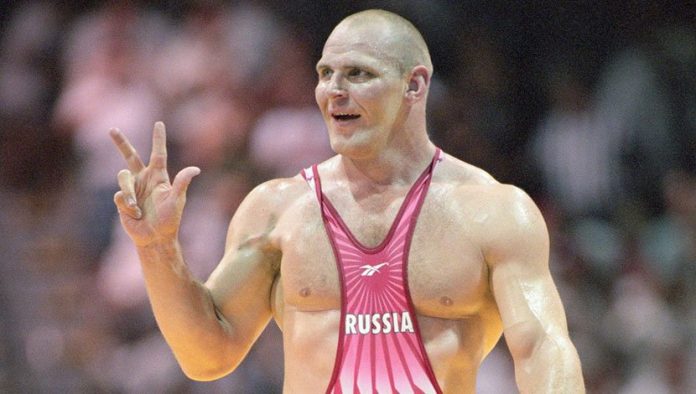
Apart from Sambo, due to its grappling roots and connection to Brazilian Jiu-Jitsu, and a very vague idea of what Systema is, how much do you know about Russian martial arts? AS big as it is, Russia has uncharacteristically few martial arts. At least as far online research shows. If anyone has anything to add, please do so in the comments. So far, even though it doesn’t possess dozens of martial art styles, Russia does have everything, from grappling to striking and even mixed martial arts styles. And some of them are much older and much more diverse than you might think.
WE’ve talked about interesting and unusual martial arts from around the world before. Examples include African martial arts, as well as Brazilian martial arts that stretch past Jiu-Jitsu. There are a lot more martial arts out there, some of which are highly entertaining. When it comes to Russian martial arts, the one thing that’s immediately noticeable is that their martial arts are all still very much actively practiced across the country. Of course, some are more famous than others, but they do not have a martial arts style that’s completely forgotten or only practiced in a small isolated area of Russia. That said, let’s look at some of the most interesting martial arts in existence.
The Fighting Styles Of The World’s Largest Country
Which was the first Russian martial art? That’s pretty hard to say for sure. So far, evidence suggests that there might have been a form of Russian fist fighting as early as the first millennium AD. There’s obviously no clear way of confirming this, but given how martial arts developed in other spots around the world. I’d bet Russian martial arts are much older.
Basically, Russian martial arts really kicked off after the fall and breakup of the Soviet Union. Up to that point, they were not particularly encouraged and were even outlawed for a while by the Russian empire in the mid-1800s. During the Soviet era, the focus was on hand to hand martial arts that had a military application. A couple of those styles are still in large, both in Russia and the world now, and have morphed into sports, as well as hand-to-hand systems. Given the size and location of Russia, there are many people that belong to many cultures living there. That has been the case for centuries.
Apart from demographic diversity, this also means diversity when it comes to martial arts as well. Throw in all the war and conflict Russia has seen, and you have a perfect recipe for the development of martial arts. Most of them follow the pattern of other ancient martial arts – they’re first developed for battle and then turn into sports.
Russian martial arts got their day under the sun somewhere in the 1980s. After the Soviet Union, apart from the well known Systema and Sambo, a few other martial arts styles emerged. With roots in folk-type martial arts, they brought something slightly different to the world of martial arts. A couple worth mentioning is Buza and Russian All-Round-Fighting. Let’s look at each in more depth.
Russian Martial Arts – An Overview
Russian martial arts, at least those that I could find, number 8 different styles. Again, given the ethnic and geographic diversity of Russia, there are bound to be more, especially folk style ones. However, the ones that are not a local secret tradition include the well-known Sambo and Systema, to begin with. Of course, there are more specific ones too, like SKad, and Russian Fist Fighting. There are also folk-type martial arts in Buza and Russian All-Round-Fighting, as well as hand-to-hand styles like ARB.
Russian All-Round-Fighting

Systema

The name, as you might presume, means simply “system”. It is a martial art that the world first met somewhere in the 1990s. In the post- Soviet Union era Systema spread quickly amidst some controversy, though. Namely, it stakes a claim that is emerged as a result of “secret” fighting techniques of the Soviet Union’s special forces. The civilian version today is all about hand to hand combat geared towards self-defense. There’s no actual knife fighting done, but there are lots of knife and gun defense training in the system.
Sambo
For us grapplers, this is the most well-known Russian martial art. I guess sports-wise, this is the only one of the Russian martial arts that’s an actual sport. Standing for “SAMozashchita Bez Oruzhiya” It translates literally to “Self Defense Without Weapons”. The basic notion behind it was to blen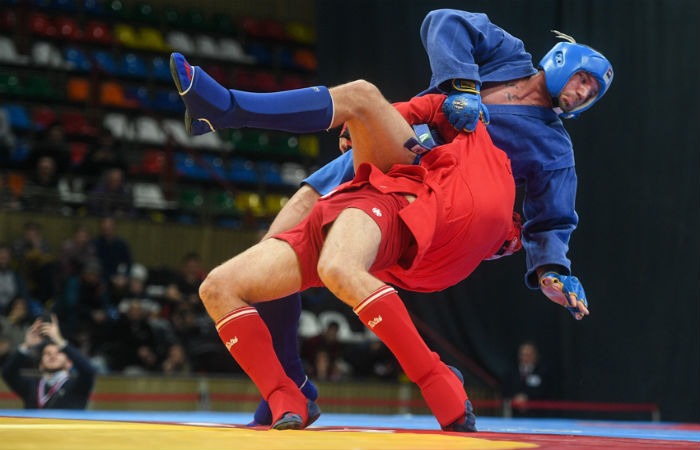
There are two main forms of Sambo today; Sport Sambo and Combat Sambo. Both works as sports and both have competitions around the world, including world championships. Sport sambo involves mostly Judo-type matches, just with lots more submissions, particularly leg locks. Chokes, for some reason, are illegal techniques. Combat Sambo is like MMA, including strikes and grappling, both standing and on the ground.
The Sambo attire is also very recognizable with one fighter being in blue and the other In red. Furthermore, they wear a top Gi jacket, but shorts on the bottom, as well as wrestling shoes of matching color.
Russian Skad
This is the Filipino Escrima od Russian martial arts. Okay, not quite but it does involve sticks. The sticks in question can be anywhere between 1 and 4 feet long, and the fighters do not use any protective gear whatsoever. In addition, to stick fighting, Skad also involves chokes, locks and other grappling techniques if the fight gets to the ground. This is a new art and is still in its development phases.
Russian Boxing
In essence, this is just Russian bare-knuckle boxing. There’s information about this art as far back as the 13th century, but it is bound to be older. It is connected to a celebration ceremony, one dedicated to Perun, a Slavic god. IN contrast, those that spread Christianity tried to outlaw it, by saying there is no space for those that engage in fist fighting. Needless, to say, this didn’t take with the Russians.
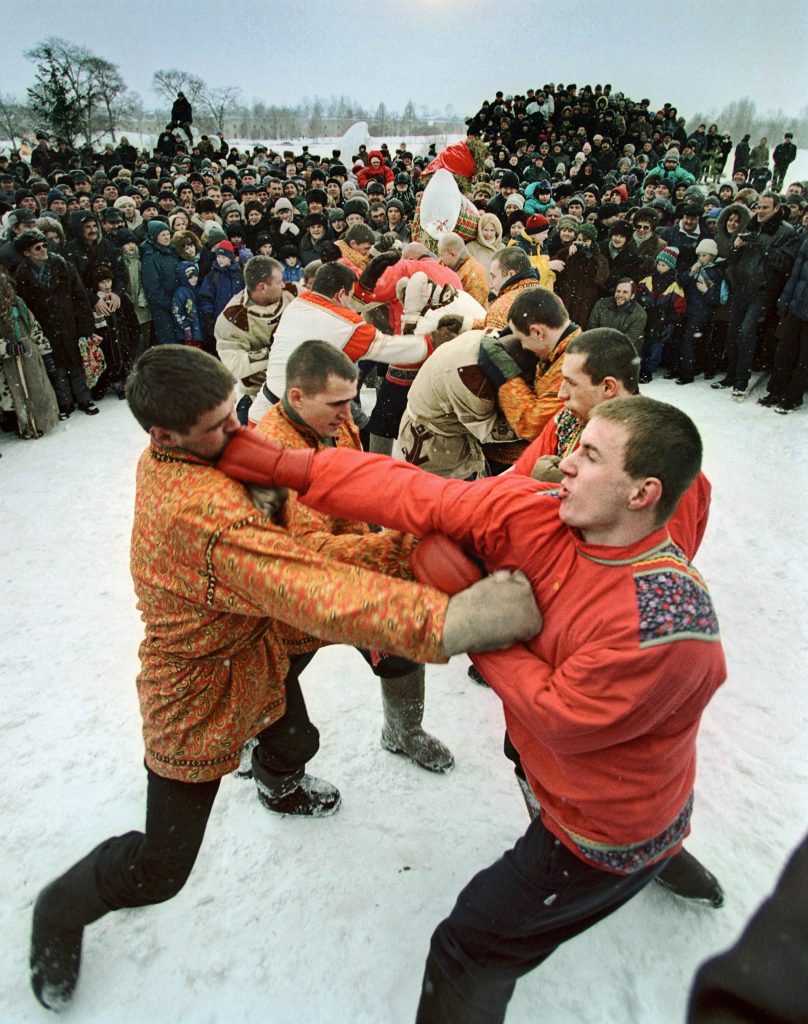
Rules were different depending on the region. In some places, it was bare-knuckle, while in others, they wore stretched out sleeves over the fists. Apart from the usual one vs. one fight, there was also a team vs. team fight called “wall on wallЌ. In the one on one fights, there was an option to fight similarly to today’s boxing, as well as one where fighterс took turns hitting each other. In the team version, it was more f a massive brawl with people numbering from a dozen to over a hundred per team participating. The goal was to force the “walls” of people back and out of the predetermined area.
ARB
ARB is a Systema-like martial art, geared towards practical self-defense. It is an abbreviation of “Armeyskiy Rukopashniy Boy” or “Unarmed Hand Fighting. It was a military-style originating in 1979. Basically, ARB is a mixture of techniques and concepts for various different martial arts in the world. Competition-wise, there’s an annual championship that thе Airborne troops of the military hold, which is actually how it all started. Rules are distinctive, involving the option to finish an opponent that’s on their hands and feet while you’re still standing. In other words, it is pretty much NHB, with the option for a tap or verbal surrender, of course.
In a more modern sports sense, ARB fighters wear taekwondo-type protection, with body armor, helmets, gloves, and shin pads. The fighters compete in rings, with referees, weight, age and belt divisions included. There are lots of forbidden techniques that make it safer to train and compete in as a civilian sport.
Buza
Yet another hand-to-hand martial art. It is a folkloric fight, though, and expressed as a dance battle, something along the lines of Brazilian Capoeira. This is one of the more interesting representatives of Russian martial arts, that involves people standing in a circle with two fighters in the middle. They wear traditional Russian costumes and there’s traditional music playing as well (again, like Capoeira). At times, there’s even the use of traditional weapons in the dance/fight performances.
Buza originates in Northwest Russia, where it has been developing over many centuries. It is still a big thing in village celebrations in the region. The fighters combine movements of spinning, sweeping and kicks during the “matches”.
Wrestling
Finally, a notable mention of Russian wrestling. It is not like wrestling is a Russian specific sport, but it is one that was developed in specific directions in Russia throughout centuries of work .tremember a certain UFC champ called Khabib Nurmagomedov and all fo the other Russian wrestlers no dominating the world MMA scene? Well, that wrestling has been a part of Russian culture for ages.
Historically speaking, wrestling is a big part of Russian culture, Russian folklore and mythology, and even the Russian military. IN celebrations wresting was often took a central role, with the winner claiming special privileges among the others in the village. Plus it was the preferred choice of entertainment for decades. Later on, Russian wrestlers became legendary on a world and Olympic level as well, starting from Alexander Karelin all the way to Khabib Nurmagomedov.
Conclusion
As with other things, Russian is full of surprises when it comes to Rusian martial arts. Hand-to-hand combat and Sambo aside, who would’ve thought Russia had a martial art that involved dancing and kicks like Capoeira? Or, a weird fighting system involving sticks, or even more bizarrely, a bare-knuckle boxing event where teams of hundreds of people clashed? Thre’s a lot of entertainment coming from there, for sure, and I can’t wait to see what else will be revealed about this intriguing country.


![Darce Choke Encyclopedia – Origins, Mechanics and Variations [2025] BJJ, choke, Brabo, BJJ Darce Choke, D'arce Choke, Darce BJJ Choke](https://bjj-world.com/wp-content/uploads/2017/11/JungPoirierLeeYahoo-218x150.jpg)









![Cross Ashi Garami Firas Zahabi DVD Review [2025] Cross Ashi Garami Firas Zahabi DVD Review](https://bjj-world.com/wp-content/uploads/2025/04/cross-ashi-garami-firas-zahabi-dvd-review-218x150.png)


![Ultimate Study Tomoe Nage Neil Adams BJJ DVD Review [2025] Ultimate Study Tomoe Nage Neil Adams BJJ DVD Review](https://bjj-world.com/wp-content/uploads/2025/04/tomoe-nage-neil-adams-bjj-dvd-review-218x150.png)
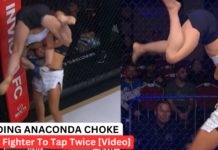
![[VIDEO] Ex-UFC Champ Aljamain Sterling Gets Choked Out Cold on Russian TUF-Style Show VIDEO - Aljamain Sterling Gets Choked Out Cold on Russian Reality Show](https://bjj-world.com/wp-content/uploads/2025/04/LEG-GRABS-2-218x150.png)
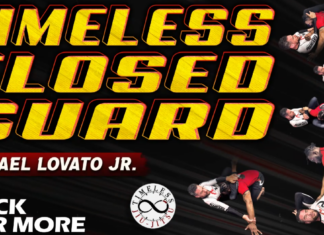
![Osoto Gari for Jiu Jitsu Jackson Nagai DVD Review [2024] Osoto Gari for Jiu Jitsu Jackson Nagai DVD Review](https://bjj-world.com/wp-content/uploads/2024/10/osoto-gari-for-jiu-jitsu-jackson-nagai-dvd-review-100x70.png)
![Collar Sleeve Guard Mikey Musumeci DVD Review [2024] Collar Sleeve Guard Mikey Musumeci DVD Review](https://bjj-world.com/wp-content/uploads/2024/12/collar-sleeve-guard-mikey-musumeci-dvd-review-100x70.png)
![Henry Akins Black Hole No-Gi Closed Guard DVD Review [2024] Henry Akins Black Hole No-Gi Closed Guard DVD Review](https://bjj-world.com/wp-content/uploads/2024/09/henry-akins-black-hole-no-gi-closed-guard-dvd-review-100x70.png)



![Tiny Woman Guide To The Guard Ann Kneib DVD Review [2024] Tiny Woman Guide To The Guard Ann Kneib DVD Review](https://bjj-world.com/wp-content/uploads/2024/11/tiny-woman-guide-to-the-guard-ann-kneib-dvd-review-100x70.png)

![Baby Shark Guard System Diogo Reis DVD Review [2025] Baby Shark Guard System Diogo Reis DVD Review](https://bjj-world.com/wp-content/uploads/2025/02/baby-shark-guard-system-diogo-reis-dvd-review-100x70.png)

![The Empty Half Guard Michael Currier DVD Review [2025] The Empty Half Guard Michael Currier DVD Review](https://bjj-world.com/wp-content/uploads/2025/03/empty-half-guard-michael-currier-dvd-review-100x70.png)

![Highlight Hip Throws Christian Ozbek DVD Review [2025] Highlight Hip Throws Christian Ozbek DVD Review](https://bjj-world.com/wp-content/uploads/2025/01/highlight-hip-throws-christian-ozbek-dvd-review-100x70.png)


![Edging Yourself Out Of Danger Craig Jones DVD Review [2024] Edging Yourself Out Of Danger Craig Jones DVD Review](https://bjj-world.com/wp-content/uploads/2024/12/edging-yourself-out-of-danger-craig-jones-dvd-review-100x70.png)

![No-Gi Defense Xande Ribeiro DVD Review [2024] No-Gi Defense Xande Ribeiro DVD Review](https://bjj-world.com/wp-content/uploads/2024/11/no-gi-defense-xande-ribeiro-dvd-review-100x70.png)

![Front Head Lock Kaynan Duarte DVD Review [2025] Front Head Lock Kaynan Duarte DVD Review](https://bjj-world.com/wp-content/uploads/2025/02/front-head-lock-kaynan-duarte-dvd-review-100x70.png)
![A Blueprint For Smeshing Khabib Nurmagomedov DVD Review [2024] A Blueprint For Smeshing Khabib Nurmagomedov DVD Review](https://bjj-world.com/wp-content/uploads/2024/10/blueprint-for-smeshing-khabib-nurmagomedov-dvd-review-100x70.png)




![Gracie Secrets Closed Guard Kyra Gracie DVD Review [2024] Gracie Secrets Closed Guard Kyra Gracie DVD Review](https://bjj-world.com/wp-content/uploads/2024/12/closed-guard-kyra-gracie-dvd-review-100x70.png)
![BJJ Foundations Mikey Musumeci DVD Bundle Review [2024] BJJ Foundations Mikey Musumeci DVD Bundle Review](https://bjj-world.com/wp-content/uploads/2024/09/bjj-foundations-mikey-musumeci-dvd-bundle-review-100x70.png)
![Leg Lock Stock And Barrel Taylor Pearman DVD Review [2025] Leg Lock Stock And Barrel Taylor Pearman DVD Review](https://bjj-world.com/wp-content/uploads/2025/03/leg-lock-stock-and-barrel-taylor-pearman-dvd-review-100x70.png)